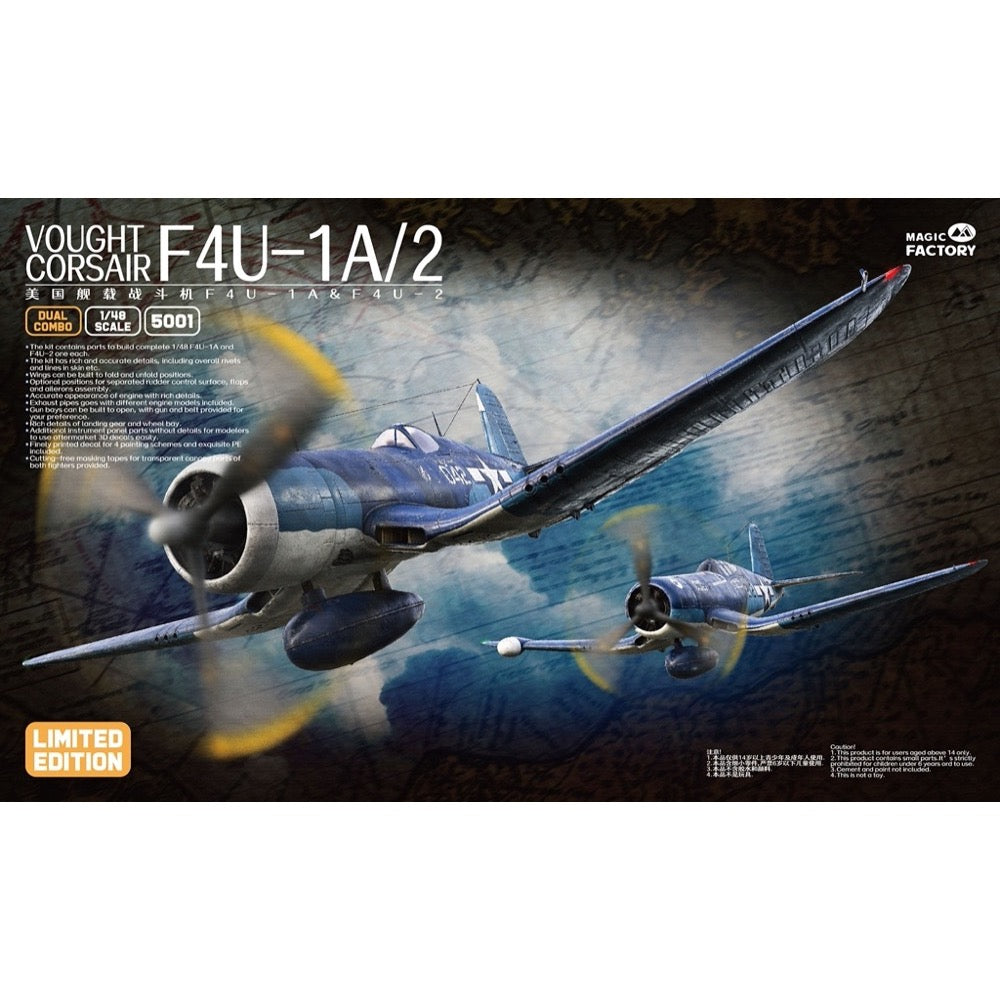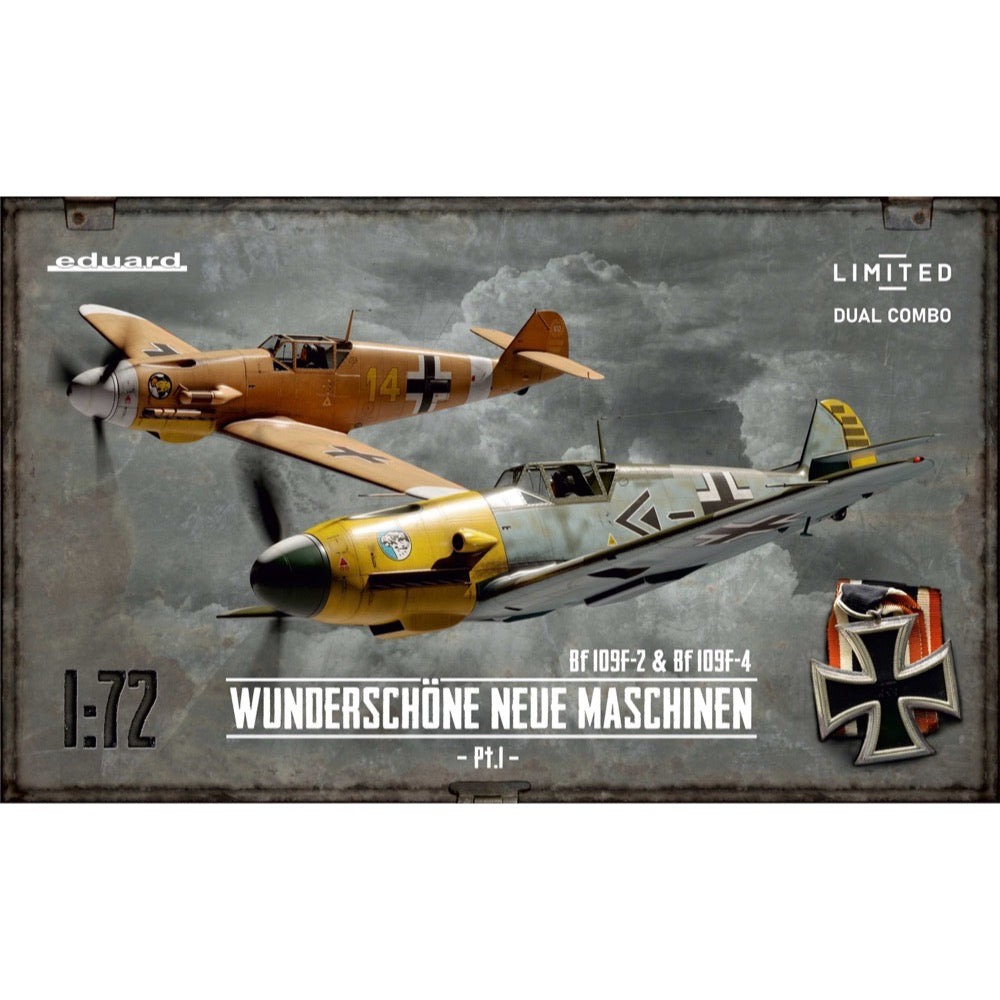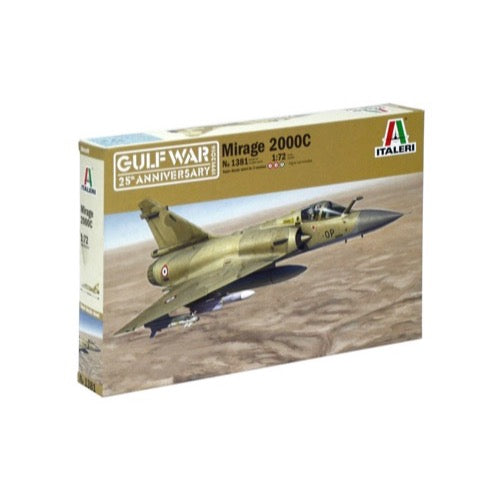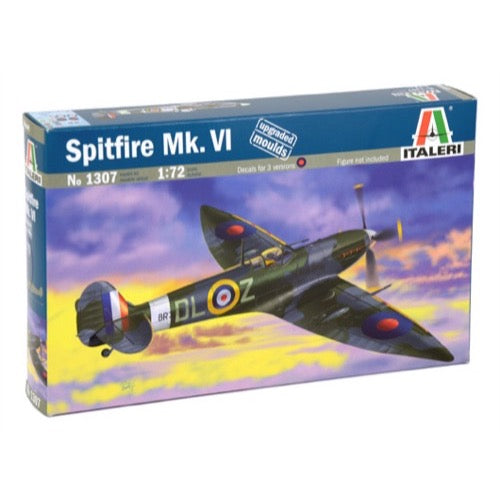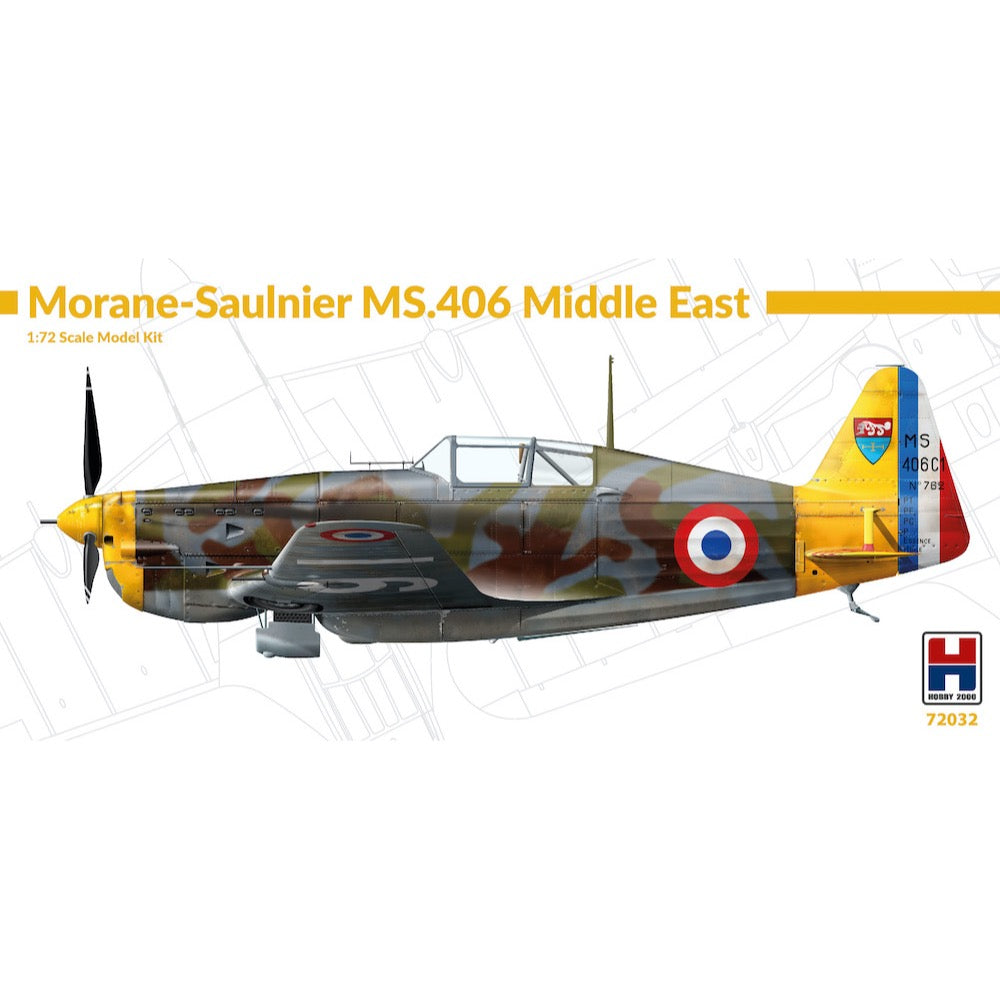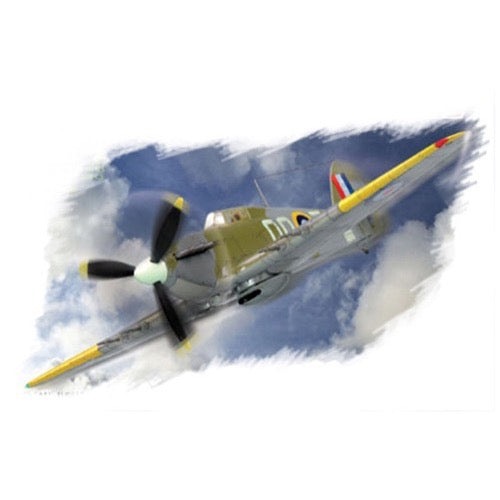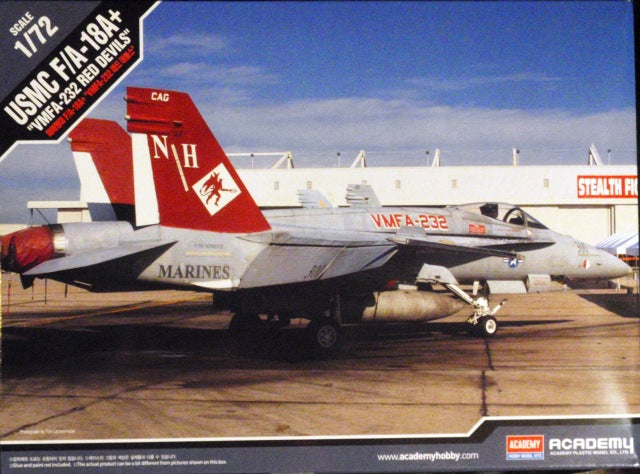
Academy 12520 1/72 USMC F/A 18A+ VMFA-232 Red Devils Le: Aus Decals
20.00
$
<p>McDonnell-Douglas / Northrop F / A-18 Hornet is an on-board fighter and attack aircraft capable of operating in all weather conditions. The roots of the F / A-18 go back to 1974 and the F-17 prototype, which was of interest to the US Navy command this year. The contract for the serial construction of the aircraft was concluded in 1976. In order to accelerate the work, the Northrop concern entered into cooperation with the McDonnell-Douglas concern. As a result, on November 18, 1978, the test flight of the prototype took place, and a year later, successful landings on the aircraft carrier. Since 1982, the aircraft has been delivered to linear units with General Electric F404-GE-402 engines as the propulsion unit. The plane is produced in several versions. The first were the F-18A (fighter) and F-18B (training). Foreign orders from Spain, Canada and Australia appeared quickly. In 1987, a version of the F-18C was created, adapted to the use of AMRAAM missiles. A year later, the F / A-18D, a two-seat version of the F-18, entered service in all weather conditions, and could be used as an attack aircraft. On its basis, the reconnaissance version of the R / F-18D was created. The newest versions (the so-called Super Hornet) -F / A-18E and F / A-18F are very modified versions of the F / A-18D. They are characterized by an increased length of the fuselage, wingspan and their surface. They also have new General Electric F414 engines and a decidedly expanded and modernized avionics. They were presented for the first time in 1995. The EA-18G Growler electronic warfare plane was also created on the basis of the F-18. All versions of the F / A-18 met with favor of pilots, they are characterized by low failure rate, ease of use and very good flight parameters. Hornets took part in the operation against Libya in 1986 and in the Operation Desert Storm in 1991. Technical data (version F / A-18 C): Maximum speed: 1915 km / h, speed of climb: 254 m / s, practical ceiling 15 240 m, maximum range: 3340 km, operating radius: 280-740 km, armament: fixed- Single 20mm M61A-1 six-barrel cannon, underslung - up to 7700 kg of cargo.</p>
<p>This is an injection-plastic jet aircraft model kit.</p>
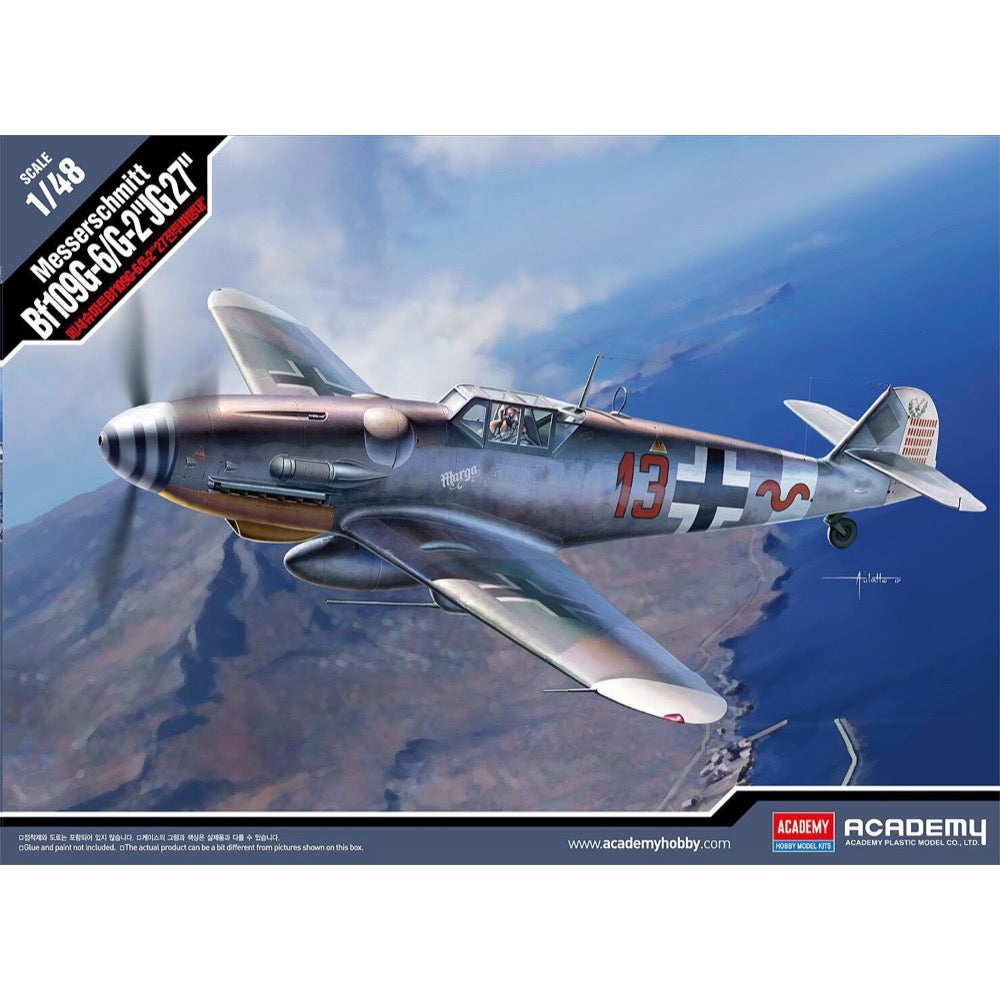
Academy 12321 1/48 Messerschmitt Bf109G-6/G-2 "JG 27"
17.00
$
<p>The Bf 109G series, or "Gustav", was introduced in mid-1942; its initial variants (G-1 through G-4) differed only in minor details from the Bf 109F, most notably in being powered by the more powerful 1475 PS DB 605 engine. Odd numbered variants were built with a pressurized cockpit and GM-1 boost as high altitude fighters, while even numbered variants were non-pressurized air superiority fighters and fighter bombers. Long-range photo-reconnaissance variants also existed. The later G series (G-5 through G-14) was produced in a multitude of variants. By early 1944 tactical requirements resulted in the addition of MW-50 water injection boost and high performance superchargers, boosting engine output to 1,800-2,000 PS. </p>
<h3>Features</h3>
<ul>
<li>Includes 20mm MK108 cannon, drop tank, bomb and air filter for various building options.</li>
<li>Build as G-6 or G-2 variant</li>
<li>Cartograf decal included</li>
<li>Contains eight marking options</li>
</ul>
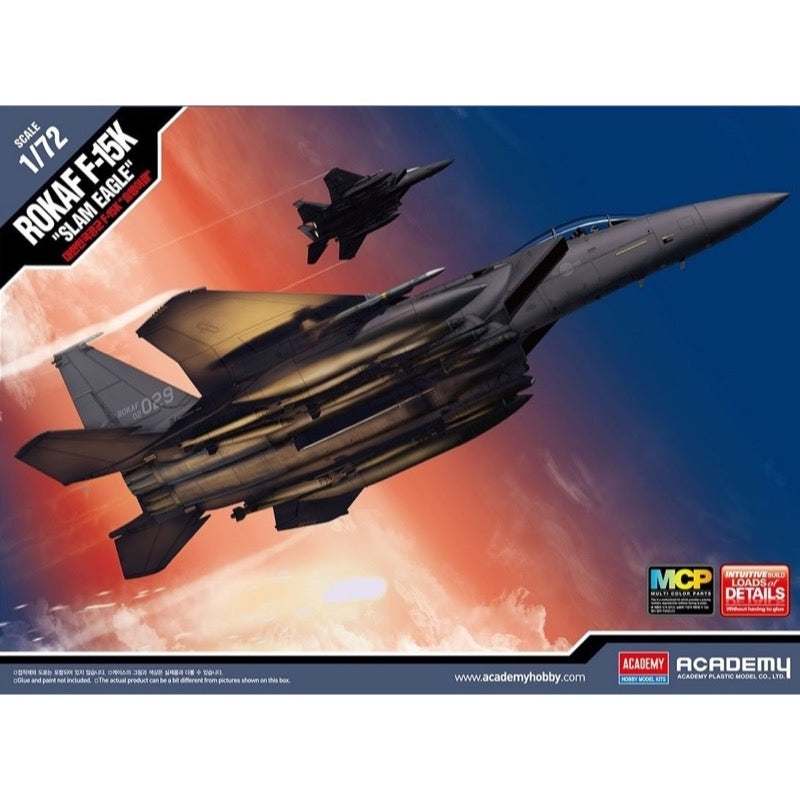
Academy 12554 1/72 ROKAF F-15K Slam Eagle
29.00
$
<p>The McDonnell Douglas F-15 Eagle is an American twin-engine fighter and attack aircraft, the first flight of which took place on July 27, 1972. The F-15 aircraft is the result of the experience gained from air combat over Vietnam, and is also the USAAF's response to the Soviet Mig-23 and Mig-25 fighters. It was created as part of the FX (Fighter Experimental) project, in which the winner was McDonnell-Douglas in 1969. When designing the F-15, particular emphasis was placed on the maximum reduction of service time. Mainly, on the one hand, it was based on the installation of elements that were as easy to use as possible, and on the other hand, the use of automatic systems, which kind of relieve people. As a result, the successor of the F-4 Phantom, surpassing it in all respects, can be served in half the time. Another strength of the F-15 is the pair of Pratt-Whitney F100 afterburner engines, which produce 4,500 kg more thrust than the machine itself weighs, allowing it to make tight turns without sacrificing great speed. In addition, it makes it possible to suspend a huge amount of additional weapons on 8 knots under the wings and fuselage. From the moment the F-15 entered service, several variants were created. The C and D versions are the second generation of single and double seater aircraft, respectively, replacing the A and B versions in 1979. Externally, they do not differ much from them, but the avionics underwent a comprehensive modification, which made the Eagle even more lethal weapon. In the 1980s, the F-15D also experimented with ASAT anti-satellite missiles. A version of the F15-E Strike Eagle was being developed at the same time. Contrary to the previous models, the E version is not only a hunting machine used for air superiority, but also an assault machine with a wide range of possibilities for attacks on ground targets. The E version entered service in 1988 and is expected to remain in the line until 2035. Another variant is the F-15J, exported and produced under license in Japan. F-15 aircraft were exported to several countries, including Japan, Israel, Saudi Arabia and South Korea. The F-15 turned out to be a very valuable machine, achieving air victories, among others. during Operation Desert Storm and the 2003 invasion of Iraq. Technical data (version E): Maximum speed: 2660 km / h, climb speed: 255 m / s, practical ceiling 19500 m, maximum range: 5580 km, armament: fixed - 1 six-barrel M61A-1 20mm cannon, suspended - up to 10660kg load.</p>
<p>This kit of the Korean Air Force fighter bomber, the F-15K Slam Eagle, features a moderately reduced number of parts, with precise modeling for accurate details and decals from Cartograf for five versions.</p>
<p>This is an injection-plastic jet aircraft model kit.</p>
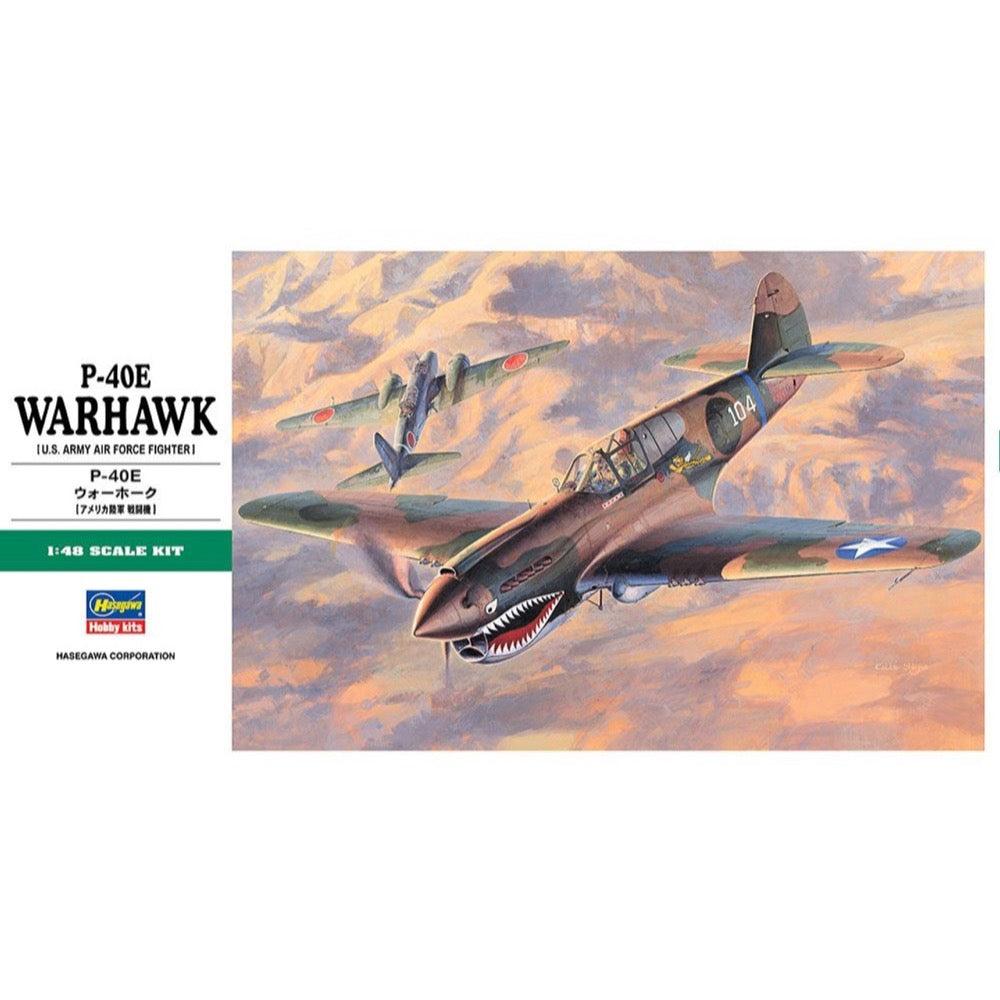
Hasegawa 09086 1/48 P-40E Warhawk
19.00
$
<p>Unassembled and unpainted model kit. The paints and glue required to complete the P-40E Warhawk USAAF kit are not included.</p>
<h3>Contents</h3>
<ul>
<li>Plastic sprue (Clear), Plastic sprue, Decalsheet (waterslide)</li>
</ul>

Revell 64300 1/72 Lancaster Mk.I/III Model Kit Set
37.00
$
<p>The four-engine Avro Lancaster was without doubt the most famous of all the RAF heavy bombers of World War II. From 1942 onwards it formed the backbone of the night bomber offensives deep in Germany and gained fame through the sinking of the Tirpitz and the destruction of the Möhne and Eder dams.</p>
<h3>Features</h3>
<ul>
<li>detailed cockpit with instrument panel and side panels</li>
<li>Navigator and radio room</li>
<li>Bomb bay doors with retractor struts</li>
<li>3 rotating machine gun turrets</li>
<li>12 bombs</li>
<li>a "cookie" bomb</li>
<li>Pulpit glazing with various attachment options</li>
<li>Main landing gear bay with separate side struts</li>
<li>detailed main landing gear</li>
<li>2 different propeller blades</li>
</ul>
<p><strong>Markings</strong></p>
<ul>
<li>Avro Lancaster B.Mk.III No.100 Squadron Royal Air Force Elsham Wolds April 1945</li>
<li>Avro Lancaster B.Mk.III No. 9 Squadron Bardney</li>
</ul>
<h3>Includes</h3>
<ul>
<li>Plastic model kit (not assembled)</li>
<li>Illustrated, multilingual assembly instructions</li>
<li>Decals</li>
<li>Basic colors (Revell Aqua Color)</li>
<li>Adhesive (Revell Contacta Professional Mini)</li>
<li>Paint brush</li>
</ul>
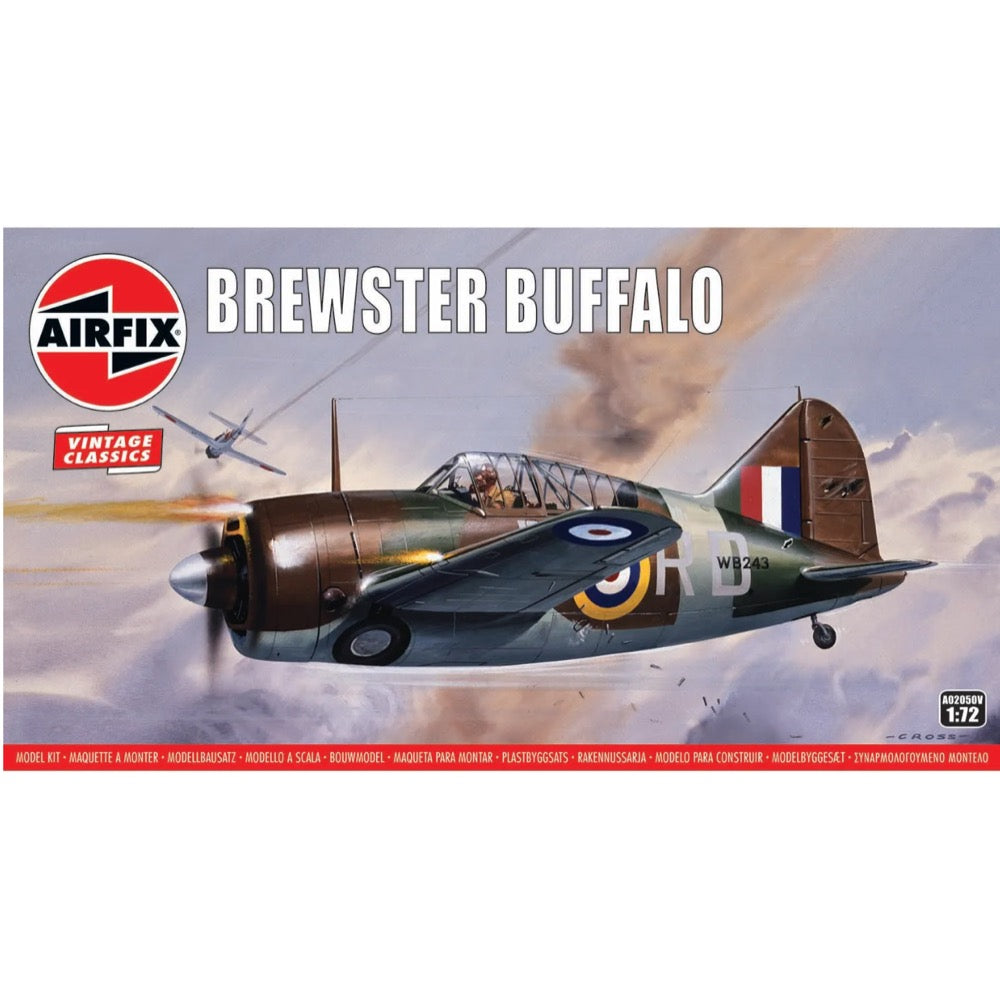
Airfix 02050V 1/72 Brewster Buffalo RAAF
9.00
$
<p>Despite its ungainly appearance, the Brewster Buffalo was one of the most significant aircraft in US aviation history and one which would see heavy combat use during the early months of WWII.</p><p>The winner of a fly-off competition with the Grumman Wildcat to provide the US Navy with a new, modern carrier-based monoplane fighter, the Buffalo incorporated a host of advanced design features, including many to support its operation from the deck of US aircraft carriers.</p><p>The fighter would also attract strong international sales support, with Britain, Finland and the Netherlands all operating the Buffalo during WWII, particularly with the Commonwealth Air Forces facing the Japanese in South East Asia.</p><h3>Specifications</h3><ul>
<li>How many pieces will be found in the box opened by the customer?: 42</li>
<li>Item Scale: 1:72</li>
<li>Release type: Re-Introduction</li>
<li>Item Length - Without Packaging (cm): 11.15</li>
<li>Item Height - Without Packaging (cm): 5.08</li>
<li>Item Width - Without Packaging (cm): 14.82</li>
<li>Finish: Plastic</li>
<li>Number of Scheme options: 2</li>
<li>Skill Level: 1</li>
<li>Flying Hours: 1</li>
<li>Wingspan (mm): 148</li>
</ul>


